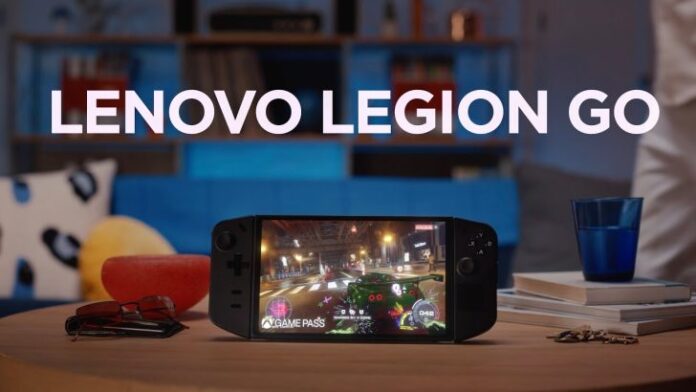
Lenovo's Legion Go handheld has been officially unveiled, featuring Ryzen Z1 APUs and an AR-powered immersive gaming experience.
Legion Go is Ready to Compete With Steam Deck & ROG Ally, Featuring Cutting-Edge Capabilities
The "Legion Go" has gained the spotlight in the industry, primarily due to the company's approach towards it. The Windows-powered handheld has integrated all the popular elements from competitors' handheld devices, making it one of the best all-around options in the market.
Starting with the onboard specifications, the Legion Go will feature up to AMD's Z1 Extreme APU, which has elevated the handheld industry to new heights with its impressive capabilities. The handheld comes with 16GB LPDDR5X-7200 memory, boasting high speeds that will take gaming on the device to the next level. For storage purposes, you get up to 1TB PCIe Gen4 SSD and a micro-SD slot supporting up to 2TB of extra storage. The handheld is loaded with all the "goodies" one could ever need, but this isn't the intriguing factor about the device.

I am particularly amazed by the device's screen, which features a massive 8.8-inch QHD+ 16:10 display, supporting 144Hz refresh rate and brightness up to 500 nits. Lenovo has bridged the gap when comparing mainstream gaming devices to portable handhelds. While the vast screen size comes with tradeoffs, such as weight and battery life, it would give a user the feeling of harnessing immense power simply in their hands.
The Legion Go's thermal department doesn't lack in any way since the company utilizes "Coldfront thermal technology" which features a liquid crystal polymer 79-blade fan, allowing the device to reach high TGP targets without worrying about thermal throttling. While the efficiency of this cooling mechanism hasn't been tested yet, it should be on par with other elements of the handheld device, given that Lenovo has adopted a top-tier approach with "Legion Go."

Now, coming to onboard controls, the Legion Go has undoubtedly thrown shade at the Nintendo Switch by integrating detachable joysticks. This move is primarily targeted at enhancing the "portability" aspect of the device since one could easily use the joysticks to play in a position however they like.

However, there is a problem that we would like to highlight, as mentioned by The Verge, which is the handheld's incompatibility with modern games since the onboard buttons of the Legion Go didn't match the game's control options, leading to an annoying experience. This is a problem several Windows handheld devices are/were experiencing at launch, mainly because companies are slapping regular old-school Windows software on the handheld without optimizing it for the device. This indeed ruins the experience of the average consumer, who expects perfection out of the box.
Moreover, an interesting fact about the Legion Go that we shouldn't overlook is the company's decision to expand handheld gaming to AR-powered devices to provide a more immersive experience. Lenovo offers the Legion Glasses separately, powered by a USB-C port. The glasses feature micro-OLED technology, a 60Hz refresh rate, and built-in speakers.

Categorizing this move as a "gimmick" won't be professional here. Still, this approach poses many questions, primarily concerning the Legion's Go power management and how it is affected by the inclusion of AR Glasses. We shouldn't jump to conclusions right now, but it is a feature that moves away from the industry norm and should thus be appreciated.
The Legion Go is expected to be available globally by November 2023, starting at €799 EUR. The company hasn't specified the cost of the Ryzen Z1 Extreme variant, but we expect it to be somewhere near the ROG Ally. It will be interesting to see how the Legion Go pans out as the "versatile" device it has been advertised, and one should wait for credible reviews before purchasing one.
WccftechContinue reading/original-link]




